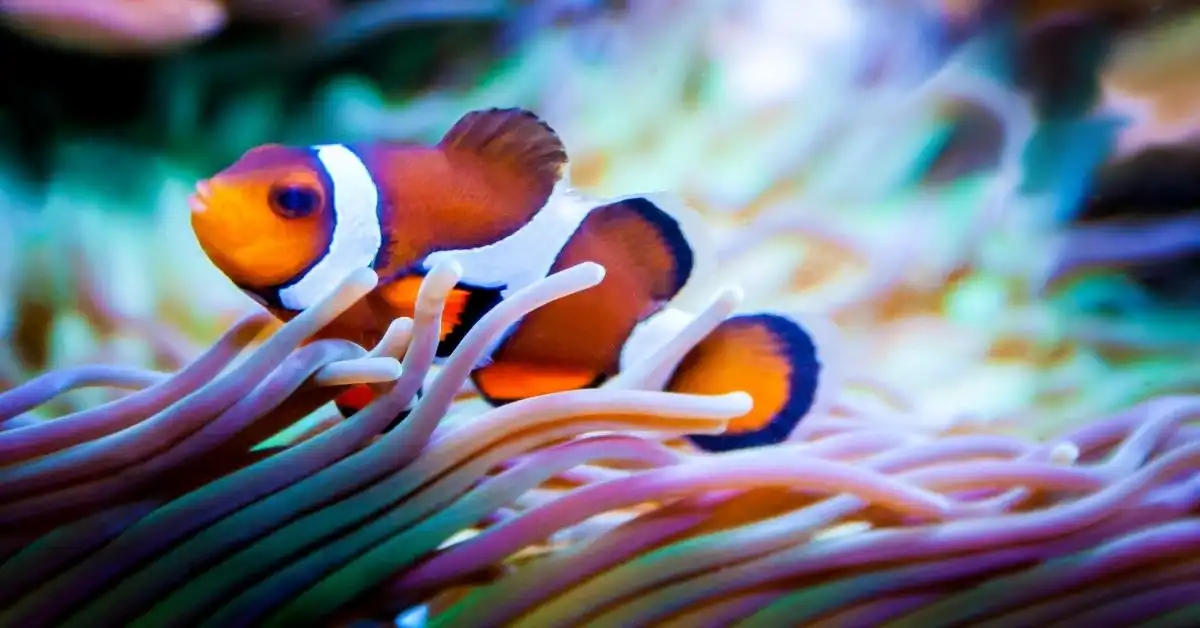We know you are too afraid of your single clownfish. And you are thinking if your clownfish is going to survive alone or not.
We get it. Sometimes we’re too concerned about them, and it’s for their safety.
Can clownfish live alone?
Yes, they can. A clownfish can do perfectly fine on its own. Clownfish do not need pairings to survive. However, these fish are known to flourish when kept in pairs too.
But yes, clownfish are self-sufficient. Still, it would be best if you continued to take the necessary care to ensure their health and happiness.
You need to have more knowledge of this topic. As a result, we’ve discussed all the little things about clownfish here in detail.
Give us some of your time and take a look at our piece!
Are Clownfish Alright Alone?
From our observation, clownfish can easily survive when it’s the only fish in the tank. You’ll see no hostile behavior and no sick fish.
The single clownfish will swing around your fish tank by itself. It’ll have a great time. So you don’t have to worry about it.
Most aquarium hobbyists prefer single clownfish to be double or multiple. There are some reasons for this preference. These are-
Firstly, if you put two male clownfish, there will be a fight over dominance. This can create a very uncomfortable scenario for you and the two clownfish. This will even endanger the plants that are in the tank.
Now, if the two fish are fighting, that means there can be three scenarios-
- Clownfish 1 is getting more food and nutrients
- Clownfish 2 is receiving more nutrients and food
- Both are suffering from malnutrition
Either situation can lead to your clownfish having black spots on them. This is something you do not want.
As a result, keeping the clownfish separated or just having one clownfish is better. This way, the clownfish can survive easily and have a healthy life!
Can Clownfish Survive In Pairs or Groups?
Now, you might think of introducing two opposite-gender clownfish to each other. Well, that’s a great plan!
Nature films usually show clownfish in couples in anemones.
Amphiprion clownfish cohabit in pairs. They live together inside a host anemone with non-breeding subordinate clowns.
Clownfish are asexual. They are known to be hermaphrodite protandrous. They start as men, and one of them becomes a girl. But it goes deeper than that.
Let’s talk about this in detail-
The clownfish pair includes a dominating female and a smaller male. A fact to be noted: the bigger is the female fish, and the smaller one is the male fish.
If the dominant female dies or removes, the male develops faster and changes sex. She will then create a monogamous relationship with the biggest sexually mature male.
So, yes, this is how the clownfish will survive in pairs or groups.
However, there are some downsides.
As we’ve mentioned, male clownfish are super territorial. This makes them aggressive. The males will often fight over a spawning female for breeding purposes.
Therefore, having clownfish in groups can be problematic.
So, your best choice is to have one clownfish. Or you can have one female and male clownfish. But no more than that.
How to Take Care of A Clownfish?
After getting a clownfish, you’ll have to take care of it. Otherwise, they will die, too, just as leather corals can die for many reasons.
So, there are some essential precautions to keep them healthy and happy. These are mentioned below-
Tank Requirements
Clownfish may flourish in tiny or big tanks due to their swimming style.
A single clownfish may live happily in a 10-gallon tank. They can also thrive in more enormous aquariums.
The clownfish will be content as long as they have a host anemone. They are also happy to stay with coral or rock to call home.
Before releasing your clownfish from quarantine, ensure the tank includes many hiding spots for the fish. Make sure the water is clean and well-balanced too.
Water Quality
Many pet shops sell ready-to-use saltwater. You can also make your saltwater. But it takes more time and effort.
The water temperature in the tank should be between 73 and 80 degrees Fahrenheit. It should have a pH of 8.0 to 8.4. Then with a ppt of 29 to 35, the specific gravity should be between 1.021 and 1.026.
The other water needs should be similar to any other saltwater tank. It should have minimal ammonia, nitrates, and less than 2 ppm nitrites.
Water changes are the most excellent approach to maintaining a healthy environment. Poisons like ammonia and nitrates build up more rapidly in smaller tanks. Treating ammonia and nitrates is difficult.
But you can reduce and prevent these by changing the tank water. So, let’s talk about when to change the tank water-
- Up to 40 gallons tanks: 15 percent of the water is changed every two weeks.
- 40-90 gallon tanks: Monthly, 20-30% of the water is changed.
- 100 gallons or more tanks: a 20-30% water change is recommended once a year.
Maintain this while keeping the water parameters in mind.
Lighting
By the way, if you’re maintaining anemones with your clownfish, you’ll need a lot of light to keep them alive. You can do that by using LED strips.
However, you might have a bio cube LED. If yes, try modifying or upgrading the bio cube LED.
FAQs
Question: Is it necessary to have clownfish mates?
Answer: External breeders and clownfish deposit their eggs, fertilizing the male fish. To execute this, you’ll need two mated clownfish.
Question: Can clownfish change their sexuality?
Answer: All clownfish are born male. They can alter their gender. But they will only do it to become the group’s predominant female.
Question: Can I add other fishes with single clownfish?
Answer: Numerous fish may coexist with clownfish! Mandarin Dragonets, Dartfish, Red Coris Wrasses, Yellow Tangs, Basslets, Blenny, and Banggai Cardinalfish are all ideal tankmates.
Bottom-Line
We’ll be parting ways with this. We hope this solves all your dilemmas about whether clownfish can live alone.
It is not too difficult to keep a single clownfish in your tank. All you have to do is be aware of the common mistakes and avoid them.


